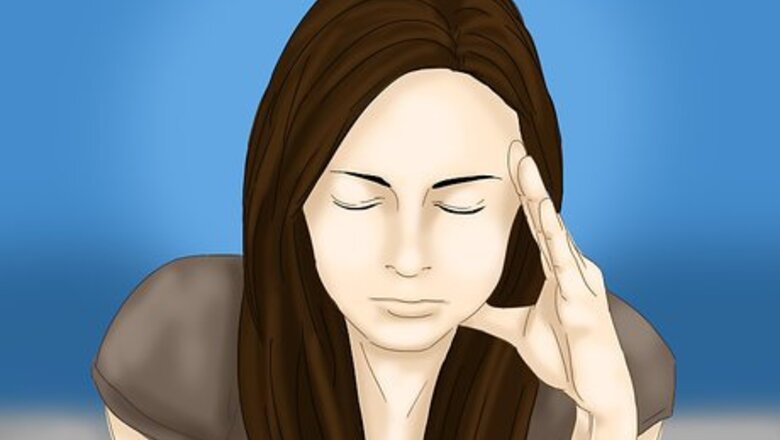
views
X
Research source
In a moment of crisis, it can be easy to feel frightened, overwhelmed, and confused. Knowing how to react appropriately[2]
X
Research source
in such a situation can increase your chance of survival, and that of others, should you ever find yourself in danger.
Assessing the Situation
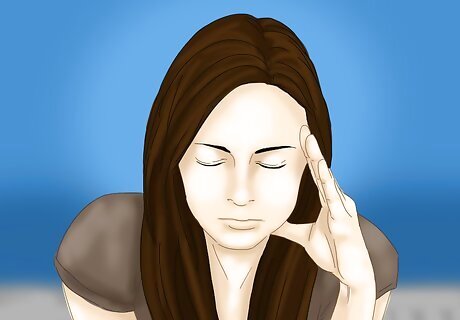
Remain calm. It's natural to panic in an emergency like a public shooting, but panicking causes people to react emotionally rather than thoughtfully. It may seem impossible to keep calm during an emergency, but there are a few things you can do to remain level-headed. Focus on your breath. Count to three while breathing in, hold your breath to the count of three, then exhale to the count of three. You can (and should) do this while moving to safety, but controlling your breath can help you from hyperventilating or making rash decisions.
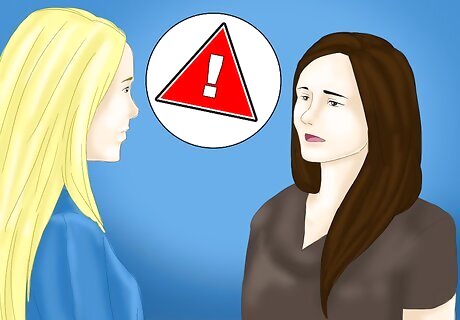
Alert others. Once you realize that there is an active shooter situation, you should alert others nearby. Some people may not have noticed that an incident has been unfolding, while others may be frozen with fear. Announce to everyone else around you that you believe there is an active shooter situation, and that everyone needs to get out or hide.
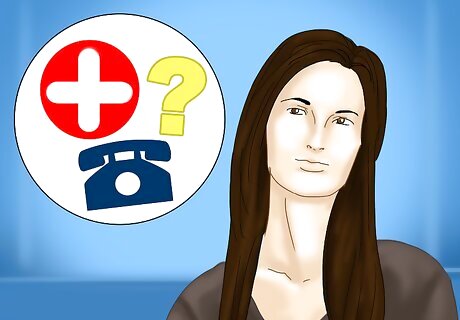
Know the plan. It's imperative that you have a plan in place of what to do in case of an emergency. Training and preparation can help you escape to safety, but remember to always have a backup plan. If you can't follow your primary plan, evaluate whether or not you can follow your backup plan.
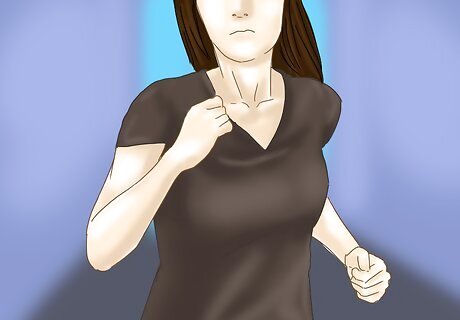
Prepare to run. Many people freeze up in an emergency. If a shooter is active, you may feel the urge to remain still and hide. However, experts advise that hiding should only be an option if you cannot safely escape. If you know of an escape route that will keep you at a safe distance from the shooter, resist the urge to freeze up and force yourself to run, as long as you can do so safely.
Running to Safety
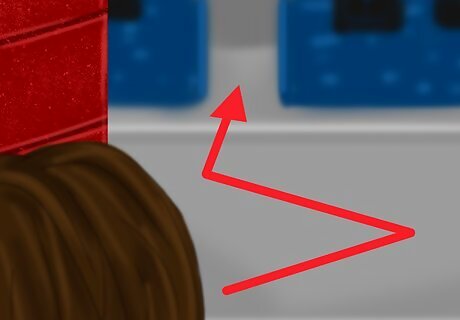
Visualize your movements. It's important to plan your escape route, and be aware of your surroundings. If there are possible positions along the route where the shooter could potentially ambush you or others, recognize this, and anticipate how you would respond if that were to happen. Most shooters aim at arbitrary targets. The harder you are to see and hit, the safer you will be, so try to be rational and avoid entering into the shooter's line of sight. If you're in the vicinity of the shooter, try to find an escape route that gives you both concealment (to stay out of view of the shooter) and cover (to protect you from bullets).
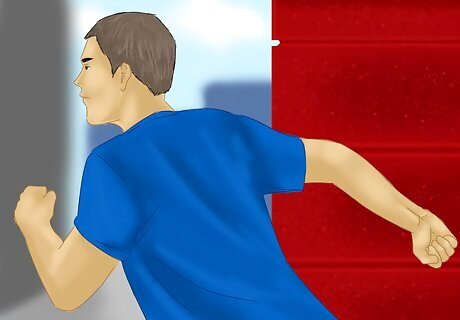
Get out if you can. When an active shooter is in your vicinity, even though you're afraid, it's important to keep moving and to get as far away from the situation and the shooter as possible. Don't stick around to watch or figure out what is going on, but put as much distance between you and the shooter; this will make it difficult for the shooter to shoot you and reduces the chance that you'll be shot by random fire. Note that this is only possible if the shooter has not noticed you, if you're lost in a crowd, or if you hear gunshots from a distance but have not yet seen the shooter. If you can help others without endangering yourself, try to do so. Try to escape even if others insist on staying. Encourage the other people you pass to leave with you. However, if others are uncertain about running, don't wait for them to decide. It's important that you get out first and foremost.
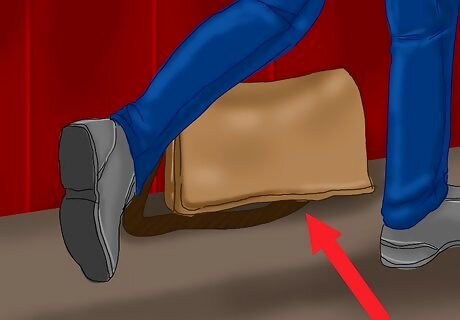
Leave your stuff. Remember that your life is what's important, not your phone or other belongings. Don't delay your escape trying to grab material items, and if you see anyone else trying to gather their things, tell them to leave their material possessions behind.
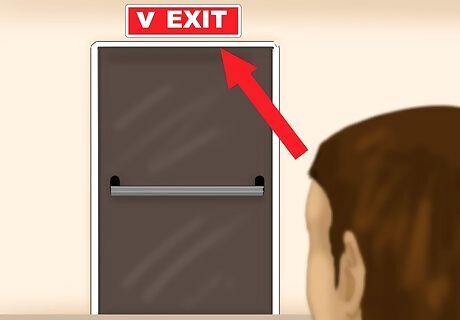
Use any exit you can. Take any exit you can to escape, including emergency exits and emergency windows. Most restaurants, movie theaters, and other public places have doors and exits designated for staff (in stockrooms and kitchens, for example), so look for and use these if possible.
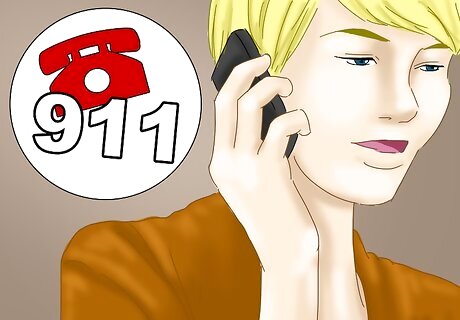
Call emergency services. Once you are removed from the situation and have made a safe exit, call 911 or find someone with a phone to make the call. Stay as far away from the building as possible once you're outside. Prevent passersby and others from entering the situation. Alert people outside the building of what is happening inside, and advise them to also stay as far away as possible.
Hiding from a Shooter
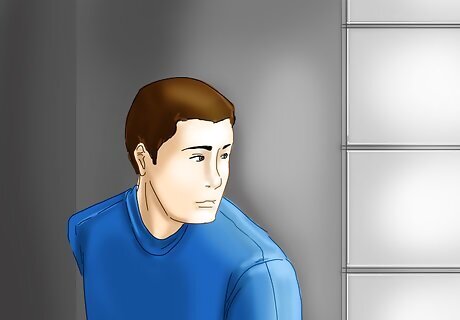
Find a hiding spot. Choose a spot that is out of the shooter's visual field and that can provide protection if shots are fired your way. Ideally, your hiding place should not trap you and make you a "sitting duck." An ideal hiding place should have adequate space for you to move and escape if you need to. Be quick in deciding where to hide. Try to secure a place to hide as soon as you can. If you can't find a room with a door that can lock to hide in, try to hide behind something that can conceal your body, like a photocopier or filing cabinet.
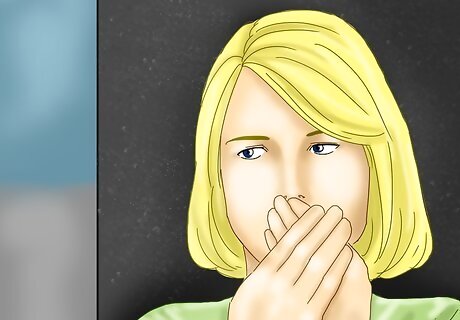
Keep quiet. Turn off the lights if there are lights, and be silent. Be sure to turn off both your phone's ringer and its ability to vibrate. Resist the urge to cough or sneeze, and do not try to talk to anyone else who may be hiding near you. Remember that if you're hiding, the last thing you want to do is have the shooter notice you. Don't call the authorities, even though you may be tempted. If you're in a populated place, like a restaurant or school, chances are that some people escaped or heard the gunfire and will alert law enforcement.
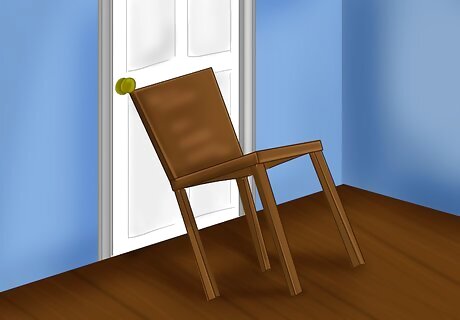
Block the hiding spot. If you are in a room, lock the door, or block it with something heavy, like a filing cabinet or sofa. Make it as difficult as possible for the shooter to enter the room. Making it difficult for the shooter to get into a room keeps you safe and also buys you time. If you or someone else has called the police, they should respond in a matter of minutes. Even just two to three minutes is a significant amount of time in an emergency situation.
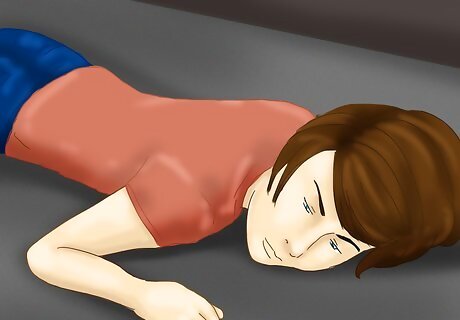
Stay low and horizontal. Lie on the floor, face down with your arms near but not covering your head. This facedown position protects your internal organs. In addition, if the shooter comes across you in this position, he may assume you're already dead. Laying low to the ground also reduces your chance of being shot by a stray bullet. Keep away from the door. Some shooters will just shoot through a locked door, rather than try to enter it or break it down. Since bullets can go through doors, it's best to stay away from that area.
Fighting the Shooter
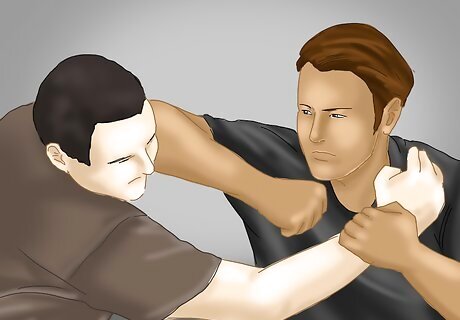
Fight as a last resort. Do not try to fight the shooter if you can safely escape or hide from the assailant. Fighting should be a last resort, but if you must fight, it's important to go into full survival mode.
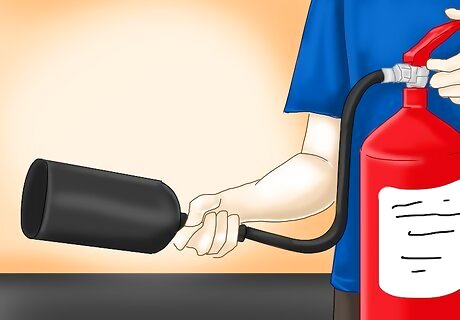
Find items to use as weapons. Locate anything you can use to hit or harm the shooter, such as a chair or fire extinguisher or pot of hot coffee. Most people won't have armed weapons on hand, so you'll need to improvise and use what you've got around you. You could hold the object in front of your body to deflect the shots or throw it at the shooter. Scissors or letter openers can be used as a knife. Even a pen could be used as a weapon, particularly since you give it leverage with the back of your thumb. If there is a fire extinguisher nearby, grab it. You can spray the fire extinguisher in the shooter's face, or use the object itself to bash the shooter in the head.
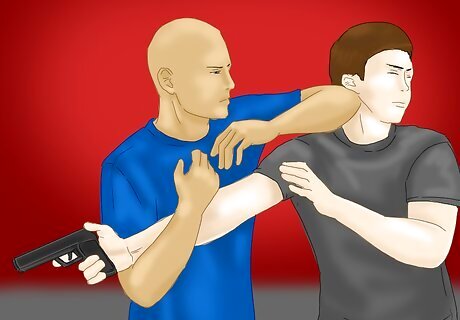
Incapacitate the shooter. Fighting back against the shooter is always a last resort if your life is endangered. If you cannot escape or hide, work alone or with others to fight. Try to find a way to get the gun out of his hands or to knock him down to disorient him. Encourage others to try and help you. Working as a group will give you an advantage over the solitary shooter.

Be physically aggressive. If the shooter is very close, you could try to disarm him, again, only if your life is absolutely in danger. Whatever you do, it's important that you act fast and focus on disarming or incapacitating the shooter. If the shooter has a rifle, grab the barrel and turn it away from you while striking or kicking him at the same time. The shooter will likely try to get control of the weapon back, but if you follow his movement he may be caught off guard and get thrown off balance. If you can get the butt end of the rifle as well, then you'll have both ends and can use the weapon as leverage to further kick, knee, or push the assailant. If the shooter has a pistol, try to grab it by the barrel from the top, so that he cannot point it at you. With many models, grabbing the pistol from the top keeps the gun from cycling properly, so while the already chambered round WILL FIRE, the next round won't be chambered without manually racking the slide. Try to aim high when attempting to bring down the shooter. His hands and the weapon are the most dangerous parts of him during a shooting. Otherwise, try for the eyes, face, shoulder and neck.
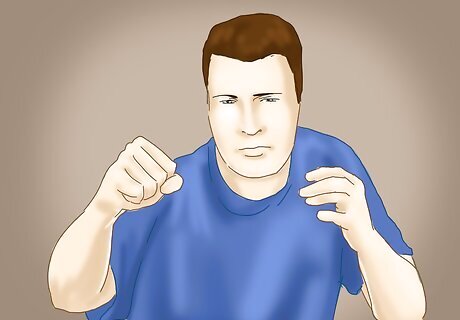
Stay committed. Even though you may be scared, particularly if you're armed with a broom and you know the shooter has an assault rifle, stay focused on getting that rifle out of his hands and bringing him down. Think of your life and the lives of others he may go after. Fortunately, your body's natural "fight" response should be triggered and keep you alert and focused on staying alive, whatever the costs.
Receiving Help
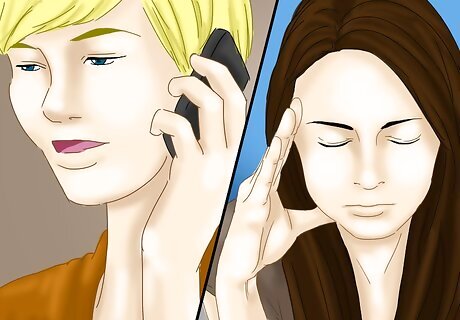
Remain calm. If you've escaped the situation, try to breath deeply. Chances are that you may be experiencing feelings of panic or shock or numbness due to the trauma, so it's best to try to get your bearings by centering your focus on your breathing. When you feel able to talk, you should call your family and loved ones to let them know that you're alright.
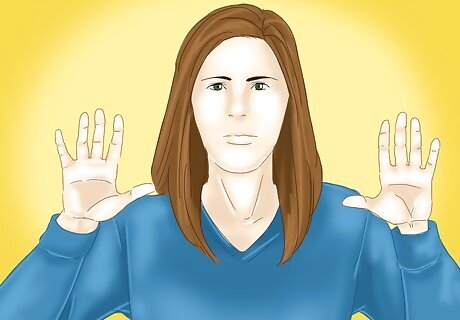
Keep your hands visible at all times. Law enforcement's first task is to stop the shooter, so as you emerge from the building or public place, always keep your hands up to show that you are not carrying any weapons. Police are trained to initially treat everyone as a suspect since some shooters pretend to impersonate victims.
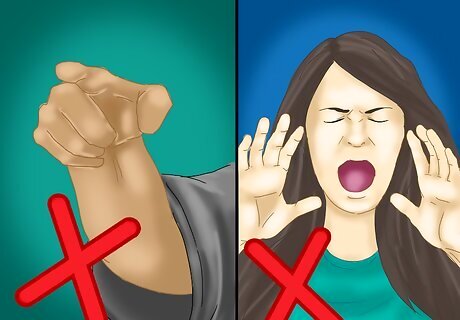
Avoid pointing or yelling. The police have specific guidelines on how to proceed during a public shooting. Let them do their jobs and don't confuse or aggravate the situation by intervening, particularly since your emotions are likely heightened. Let them do their jobs effectively and take down the shooter.
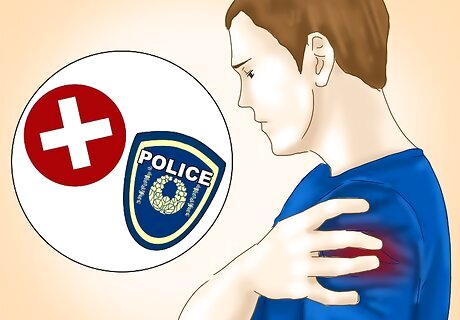
Know that help for the injured is coming. The police are trained to locate and stop shooters and this is their primary goal. They will not stop and tend to the injured, but you needn't worry as paramedics have likely already been called to care for those shot or otherwise hurt during the incident. If you have been shot, try to slow your breathing which can help prevent shock and slow the bleeding. Cover the wound with your hands or a cloth and apply pressure to try to stop the bleeding until you can get medical aid.















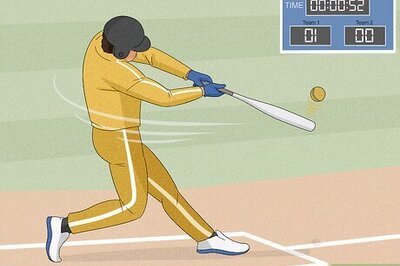


Comments
0 comment